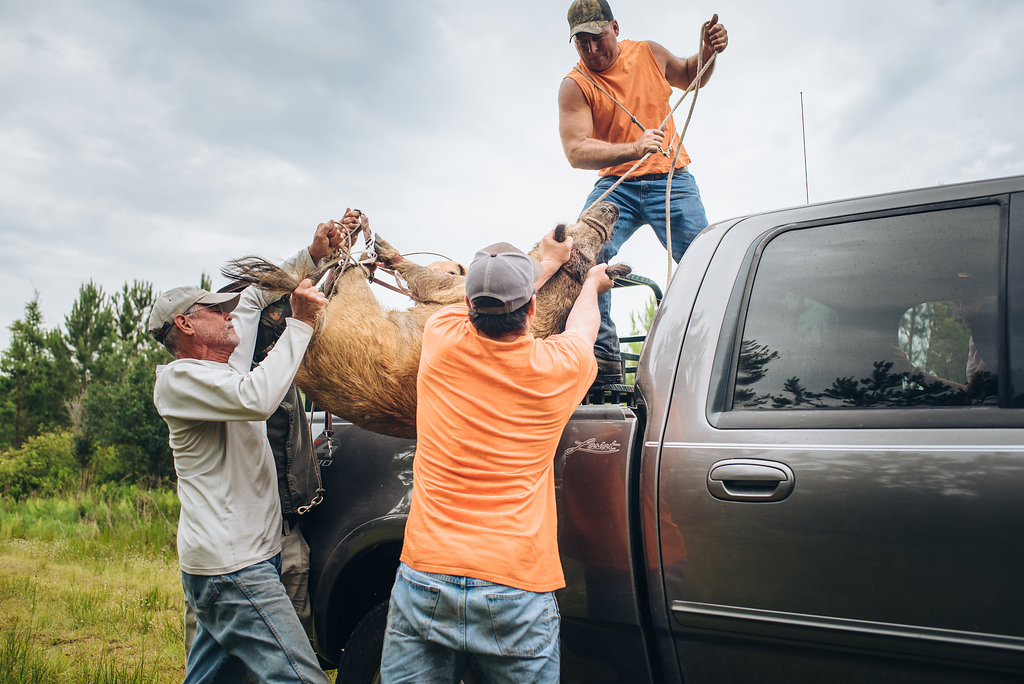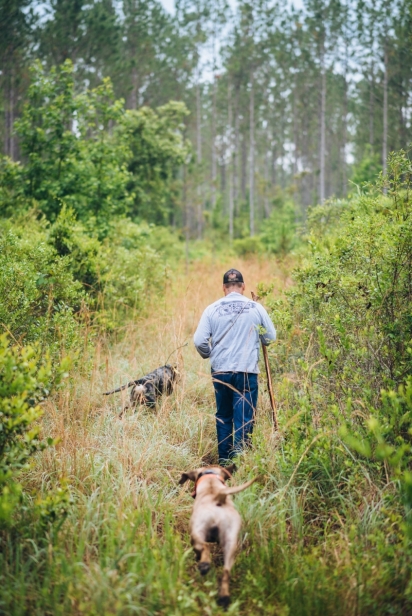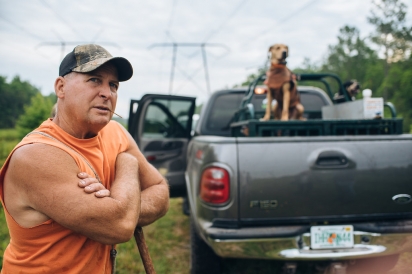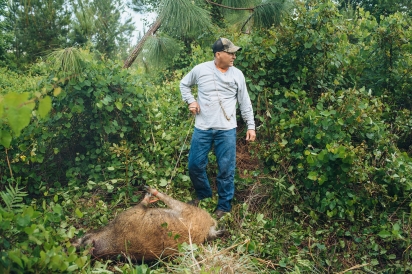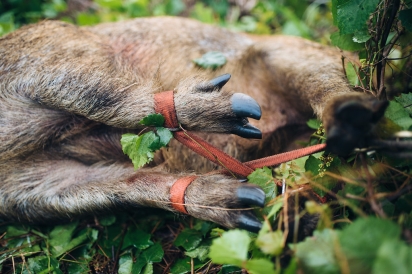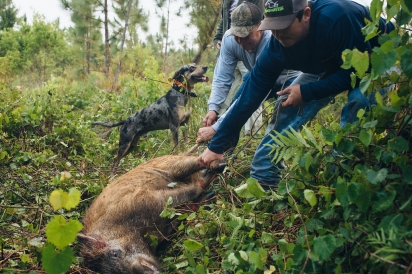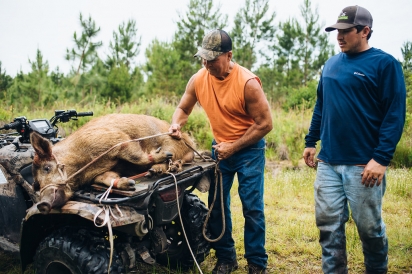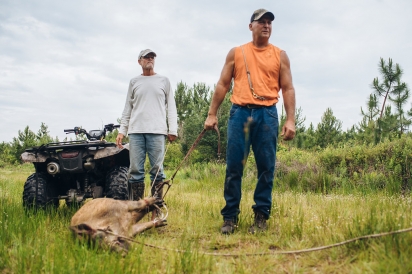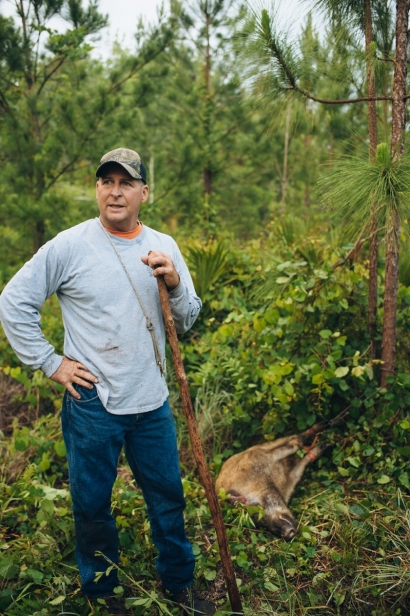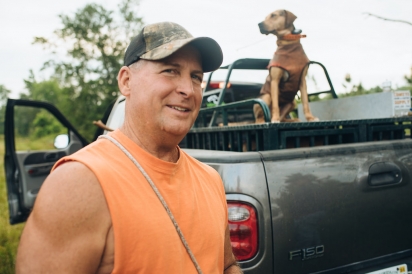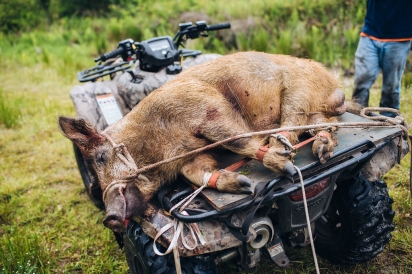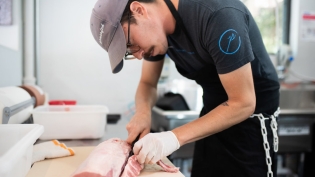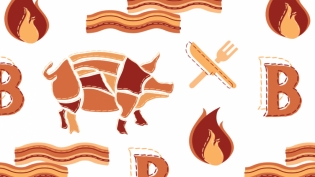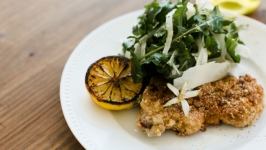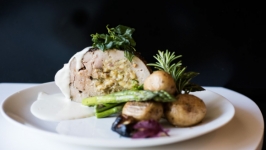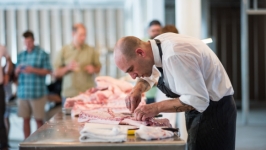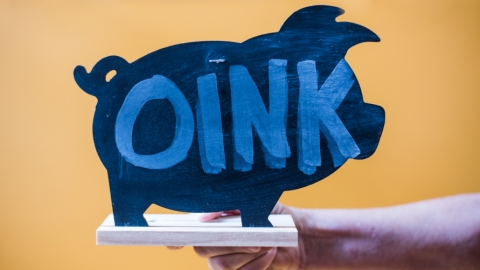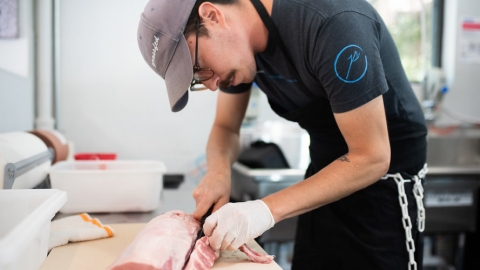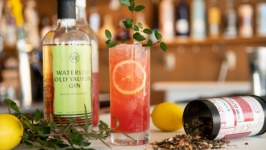Hunting Wild Hogs
The sun was just beginning to rise and the morning’s dense fog was slowly dissipating as I pulled into a gravel driveway off State Road 100 to meet Ben Williams, former owner of Fisherman’s Dock Seafood and current steward of this particular piece of property. I was up at this absurd hour on a Sunday morning to observe Ben and his wife Louann’s conservation efforts in action. The couple’s chief concern: eradicating a particularly destructive yet arguably delicious invasive species. In other words, I was here to do some wild hog hunting.
According to the Florida Fish and Wildlife Conservation Commission, the wild hog (Sus scrofa) is present in all of Florida’s 67 counties. Although not native to the area, these voracious eaters have a long-established residency in the Sunshine State, possibly arriving as early as the 16th century on the ships of notorious Spanish explorer, Hernando DeSoto. Over the past 500 years, wild hogs have become nothing short of a menace as the species has thrived at the expense of agriculture, native vegetation and several ground-nesting birds that make their homes among the undergrowth.
On the agriculture side, the pigs are known to cause a multitude of problems, from trampling and eating the crops themselves to destruction caused from rooting and wallowing, not to mention the potential damage to heavy farm equipment from holes and ruts.
With such an abundance of these nuisance animals, why not consider eating wild hogs as a way to deal with the overpopulation? Once one sets aside comparisons to store-bought pork, this is truly local meat for consumption that also could be beneficial to the environment.
Intent on restoring the endangered longleaf pine population, the Williams experience a different set of problems from their unwanted guests. “They don’t necessarily eat the pine trees,” Ben explained, “but they root around in the fields, disturb the plantings and make a mess.”
Rooting is more or less exactly what it sounds like. The hogs use their wide snouts to break up the earth, exposing edible plant roots such as Carolina redroot, a native herb named for its red-orange roots and rhizomes which wild hogs find particularly irresistible. The resulting destruction left by the animals appears as patches of freshly plowed soil, littering the property as far as the eye can see. Packs of wild hogs, typically consisting of anywhere from six to 15 or 20 have been known to destroy several acres a week, if not overnight. In the case of newly planted areas, the disturbance is enough to completely kill the saplings acre by acre, a setback to the Williams’ conservation efforts.
The hogs cause problems for mature forests as well, where the rooting will stop controlled burns in their tracks. A natural tool used by foresters, controlled burns help renew forested areas by unearthing desirable soil mineral layers, stimulating germination and reducing the risk of uncontrolled wildfires. Having performed controlled burns on over 100 acres of the property, the Williams can testify firsthand to the trouble these unwelcome critters cause.
Humans and trees aren’t the only things bothered by the hogs’ presence. As omnivores, wild hogs are opportunistic eaters, happy to devour anything they come upon. “They’re hell on ground-nesting things,” Ben says. “They’ll eat quail and turkey eggs if they find them.” As a result of their menace, hunting season on wild hogs is open year-round with little regulation. Florida law permits hunters to kill as many hogs as they care to bag regardless of sex or size, allowing the hunter to use any legal-to-own weapon. In fact, you don’t even need a permit or a hunting license as long as you have permission from the landowner.
Once we reached the spot where a large boar hog had been observed in the past few days, we met up with John and Baker Knox, two local hunters Ben allows to hunt on his property. In truth it’s the dogs that do most of the work.
“You don’t realize how much they love it,” Ben marvels as they whined and barked with excitement, eager to begin the hunt. “It’s part of their nature. It’s like they know this is their purpose.” Peanut, a grey-eyed Catahoula Leopard Dog and mother to several of the Knox’s hunting dogs, was the first to be released, bounding after the scent of the troublesome hog as if she’s been programmed to do it. “She’s like a stealth hunter,” John tells me. “She’ll sneak right up on it. When she starts barking, she’s found it and then we’ll send in the cavalry.” The cavalry – Bristol, Maximus, Crash and the rest of the dogs – comes to Peanut’s aid in surrounding and keeping the hog at bay until the hunters arrive to capture or kill it.
On the Williams property, hunters have the option to either capture or kill the hogs, provided they have been awarded a transport license issued by the Department of Agriculture. On the adjacent property, the Williams act as Nuisance Hog Control Agents for the Rice Creek Conservation Area of the St. Johns River Water Management District. Hogs caught on that side of the property are required by law to leave the property dead, a service the Williams provide for no compensation.
“Louann and I are to the point in life where much of what we do is done because we think it will help leave things better after we are gone,” Ben explains. In addition to protecting the local ecosystem from invasive species and restoring the longleaf pine population, the couple uses their land to do as much good as they possibly can. They donate farm and boat tours for charity fundraisers, host groups from the North Florida Land Trust and Audubon Society who are interested in learning about their silviculture operation and invite disabled veterans to partake in the property’s natural splendor as part of the Florida Forest Service’s Operation Outdoor Freedom.
Once the dogs have found and cornered the hog, the hunters were able to locate them via GPS trackers in the dogs’ collars. Once the Knox’s signaled for us to join them, we raced through the bumpy field to meet them. As we approached you could hear the monstrous grunting and sighing that can only come from such a massive creature, beyond frustration at its current predicament.
Standing over the hog-tied boar, Baker could tell this particular specimen would not grace the dinner table anytime soon. “If you eat him now, he ain’t gonna taste good,” he noted. Instead, he would be taken back to the Knox’s pen to be castrated before either going to slaughter or being released for other club hunters to shoot.
Male hogs are known to possess an offensive taste and odor referred to as boar taint, caused by a build-up of biological compounds in their fat. Castrating the boar helps to eliminate the undesirable qualities of the meat with the added benefit of fattening the animal. “If you cut ‘em, then they stop chasing sows and all they want to do is eat and get fat,” Baker added. In a younger, smaller animal, there would still be a pretty fair chance of getting some good meat out of it but the best thing to do with a boar this massive (about 200 pounds) is make him into sausage.
Despite their abundance, Ben finds that many hunters simply refuse to shoot the wild hogs they come across while hunting deer, turkey or other game on his property. While it may be true that wild hogs are more difficult to clean than deer, Ben attributes the hunters' hesitation to the misconception that wild game just doesn’t taste good. “I think that folks expect a wild hog, one that is usually lean, with much better muscle tone and more flavor, to taste like the fat, pink stuff in the grocery case,” says Ben, who also likens the difference between wild hogs and farm-raised pork to that of wild King Salmon versus the Atlantic farm-raised stuff. One is complex and flavorful, the other simply familiar.
That being said, preparing the meat requires some special attention. Because it’s such a lean animal, it can dry out very easily. Baker puts his on the grill, keeping a spray bottle of lemon juice and vinegar handy to keep the meat moist as it cooks. Ben recommends brining it first or thinly slicing it and frying it in olive oil, his preferred method.
We spent a few more hours unsuccessfully tracking other hogs, stealing handfuls of tart, wild blueberries as we made our way through the woods. We spotted deer, several snakes and a surprising number of bear tracks but the dogs came up short in their search for another hog. With the sun much higher in the sky, we threw in the towel. The dogs jumped back into the truck, panting heavily from a hard day’s work as they settled into their cages. It was early yet, still time to grab breakfast back in Jacksonville but it seemed almost shameful to eat bacon or sausage from farm-raised pigs after all I'd just experienced. I opted for a cup of coffee instead.


